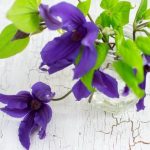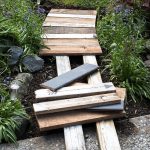Are you looking to transform your outdoor space into a natural and sustainable oasis? In this article, we will explore a variety of natural landscaping ideas that will help you create a beautiful and eco-friendly garden. From choosing the right plants to incorporating water features and creating wildlife habitats, we will cover it all.
Whether you’re aiming for a serene, wildflower-filled meadow or a vibrant, diverse ecosystem, these tips will guide you in the right direction. Join us as we dive into the world of natural landscaping and discover the many benefits it has to offer.
Natural landscaping is a perfect way to bring beauty and biodiversity to your outdoor space while also benefiting the environment. By focusing on native plants, sustainable hardscaping materials, and soil health, you can create a low-maintenance landscape that thrives year-round. In this section, we’ll introduce the concept of natural landscaping and its various components, setting the stage for an in-depth exploration of each aspect.
Throughout this article, we will provide practical advice on how to design and maintain your natural landscape for maximum impact. Whether you’re an experienced gardener or just starting out, these ideas will inspire you to create a sustainable and visually stunning outdoor space that both people and wildlife can enjoy. Keep reading for tips on selecting the right plants, incorporating water features, attracting wildlife, using eco-friendly materials, optimizing soil health, minimizing maintenance, and designing for all seasons.
Choosing the Right Plants
When it comes to natural landscaping, selecting the right plants is crucial for the success of your design. Native plants and wildflowers are the foundation of a natural landscape, providing habitat for local wildlife and contributing to the overall ecosystem. By choosing these types of plants, you can create a beautiful and sustainable garden that requires minimal maintenance and resources. Here’s a guide to help you select the best native plants and wildflowers for your natural landscaping project.
Benefits of Native Plants
Native plants have evolved over time to thrive in specific regions, making them well-adapted to local climate conditions, soil types, and rainfall patterns. These plants often require less water, fertilizer, and pesticides compared to non-native species, making them an environmentally-friendly choice for your natural landscaping project. Additionally, native plants provide food and shelter for native wildlife, supporting biodiversity in your garden.
Selecting Wildflowers
Wildflowers are an essential component of natural landscaping, adding vibrant colors and attracting pollinators such as bees and butterflies. When choosing wildflowers for your garden, consider factors such as blooming season, sun exposure, and soil moisture levels. Look for a mix of annuals and perennials to ensure continuous blooms throughout the growing season. Many native wildflowers also have deep root systems that help prevent erosion and improve soil health.
Creating a Plant Palette
To create a cohesive and visually appealing natural landscape, consider creating a plant palette that includes a variety of native grasses, shrubs, trees, and flowers. Research which plants are indigenous to your area and choose species that are well-suited to the specific growing conditions in your garden. By using a diverse selection of native plants and wildflowers, you can mimic the look of natural ecosystems while providing essential resources for local wildlife.
By carefully selecting native plants and wildflowers for your natural landscaping project, you can create a beautiful and ecologically beneficial outdoor space that supports local wildlife while minimizing environmental impact. Incorporating these elements will not only enhance the visual appeal of your landscape but also contribute to sustainability efforts within your community through these natural landscaping ideas.
Incorporating Water Features
Water features can add a serene and beautiful element to any natural landscape. Ponds, streams, and waterfalls not only enhance the aesthetic appeal of your outdoor space but also provide a habitat for various wildlife. When integrating water features into your natural landscaping design, it’s essential to consider factors such as the size of your space, the local climate, and the overall theme of your garden.
One of the first considerations when incorporating water features is choosing the right location. Water elements should be placed in areas that receive adequate sunlight and are easily visible from different vantage points in the landscape. It’s also important to ensure that there is enough space to accommodate the size of the feature without overwhelming or crowding the surrounding plants and hardscaping elements. Additionally, considering accessibility for maintenance is crucial.
In terms of design, natural landscapes benefit from a more organic approach to water features. Instead of overly structured ponds or fountains, consider creating a meandering stream or a cascading waterfall that mimics nature. This helps to maintain a cohesive and harmonious look with the surrounding environment. Incorporating native aquatic plants around the water feature can also help enhance its natural appeal while providing valuable habitat and food sources for local wildlife.
| Water Feature Considerations | Designing With Natural Appeal |
|---|---|
| Choosing the right location based on sunlight and visibility | Consider an organic design such as meandering streams or cascading waterfalls |
| Ensuring adequate space for maintenance and avoiding crowding surrounding elements | Incorporate native aquatic plants for added natural appeal and wildlife habitat |
Creating Wildlife Habitats
One of the key elements of natural landscaping is creating a welcoming environment for wildlife. By incorporating specific plants, flowers, and features into your garden, you can attract birds, butterflies, and beneficial insects that will bring your landscape to life.
When selecting plants for your natural garden, it’s important to choose those that provide food and shelter for wildlife. Native plants are an excellent choice as they have co-evolved with local wildlife and offer the necessary resources for their survival. Wildflowers such as coneflowers, milkweed, and black-eyed Susans are great options for attracting butterflies and bees, while berries and fruit-bearing trees can be a source of sustenance for birds.
In addition to planting the right vegetation, you can also incorporate specific design elements to create an inviting habitat for wildlife. Bird baths, feeders, and butterfly puddling stations can provide essential resources for different species. By strategically placing these features throughout your garden, you can increase its appeal to a variety of wildlife. Implementing natural landscaping ideas such as these will not only benefit the animals but also enhance the overall beauty and harmony of your outdoor space.
Sustainable Hardscaping
When it comes to natural landscaping ideas, sustainable hardscaping is an essential component. Using eco-friendly materials for pathways, patios, and retaining walls not only enhances the beauty of your outdoor space but also minimizes the impact on the environment. One popular option for sustainable hardscaping is using reclaimed or recycled materials such as bricks, pavers, and stone. These materials not only add a unique and rustic charm to your landscape but also reduce the demand for new resources.
Another key aspect of sustainable hardscaping is incorporating permeable paving materials. Permeable pavers allow water to seep through the surface and into the ground, reducing stormwater runoff and helping to replenish groundwater supplies. This environmentally conscious approach can also prevent erosion and minimize flooding in your natural landscape. Additionally, choosing locally sourced materials for your hardscaping projects reduces transportation-related carbon emissions, making it a more sustainable choice overall.
Incorporating sustainable hardscaping into your natural landscaping design can also extend to the construction techniques used. For example, using dry-laid stone walls instead of mortared ones reduces the need for concrete-based materials and minimizes the use of heavy machinery during installation. By prioritizing eco-friendly practices in your hardscaping projects, you can create a beautiful and environmentally responsible natural landscape that you can enjoy for years to come.
| Sustainable Hardscaping Ideas | Benefits |
|---|---|
| Reclaimed or recycled materials | Reduce demand for new resources |
| Permeable paving materials | Reduces stormwater runoff and replenishes groundwater supplies |
| Locally sourced materials | Reduces transportation-related carbon emissions |
| Dry-laid stone walls | Minimizes use of heavy machinery during installation |
The Importance of Soil Health
When it comes to natural landscaping, healthy soil is essential for the success of your garden. Healthy soil provides the necessary nutrients and support for plants to thrive, ultimately contributing to the overall beauty and sustainability of your landscape. Understanding the role of healthy soil in natural landscaping is crucial for creating a thriving ecosystem that benefits both the environment and your garden.
To improve the health of your soil, consider implementing these natural landscaping ideas:
1. Composting: Start a compost pile using kitchen scraps, yard waste, and other organic materials. Using compost as a natural fertilizer will enrich the soil with essential nutrients and microorganisms.
2. Mulching: Mulch helps retain moisture in the soil, suppresses weeds, and adds organic matter as it breaks down. Choose natural mulch like wood chips, straw, or leaves to enhance soil health.
3. Planting cover crops: Cover crops such as clover or rye help prevent erosion, add nitrogen to the soil, and improve its structure by increasing organic matter content.
Implementing these natural landscaping ideas will not only improve the health of your soil but also create a thriving environment for your plants while reducing the need for synthetic fertilizers and pesticides. By focusing on soil health in your natural landscaping design, you can create a sustainable and beautiful garden that supports both plant life and beneficial organisms within the ecosystem.
Low-Maintenance Maintenance
Use Native Plants and Wildflowers for Easy Care
One of the best ways to minimize the maintenance of your natural landscape is to choose native plants and wildflowers. These plants are already adapted to the local climate and soil conditions, reducing the need for special care or extensive watering. They also provide food and shelter for local wildlife, creating a balanced ecosystem within your garden. By selecting the right plants for your region, you can significantly reduce the time and effort required to keep your landscape looking beautiful.
Implement Mulching and Composting Techniques
Mulching is essential in natural landscaping as it helps retain moisture, prevent weed growth, and protect soil from erosion. Organic mulches like wood chips, straw, or leaves can also break down over time, adding valuable nutrients to the soil. Composting is another low-maintenance technique that can improve soil health while reducing the need for chemical fertilizers. By creating a compost pile with kitchen scraps and yard waste, you can enrich your garden’s soil naturally.
Plan Thoughtfully for Water Conservation
Incorporating water features like ponds or streams into your natural landscaping design can create a serene and visually appealing environment. However, these features may require upkeep in terms of cleaning and maintenance. To minimize the work involved, consider implementing water conservation techniques such as using drought-tolerant plants or installing a rainwater harvesting system. This will not only reduce your water usage but also lessen the time needed to care for these elements of your natural landscape.
By following these low-maintenance maintenance strategies and incorporating natural landscaping ideas into your outdoor space, you can create a beautiful environment that requires minimal upkeep while supporting local wildlife and promoting sustainability.
Designing for All Seasons
In conclusion, natural landscaping offers a wealth of benefits and beauty for homeowners and the environment. By choosing native plants, incorporating water features, creating wildlife habitats, using sustainable hardscaping materials, and prioritizing soil health, homeowners can create stunning landscapes that support local ecosystems and reduce maintenance needs.
The design of a natural landscape to ensure year-round beauty regardless of the weather is an important consideration for many homeowners. With careful planning and plant selection, it’s possible to create a landscape that looks beautiful and vibrant in every season.
When designing for all seasons, it’s essential to choose a variety of plants that bloom or display unique characteristics throughout the year. Incorporating evergreen trees and shrubs alongside flowering perennials can provide structure and interest even in the winter months. Additionally, considering the use of ornamental grasses and plants with colorful foliage can add visual appeal during autumn when other plants may be dormant.
Frequently Asked Questions
What Is the Best Low Maintenance Landscaping?
The best low maintenance landscaping typically involves using native plants, which are already adapted to the local climate and require less water and maintenance. Incorporating mulch to suppress weeds, using drought-tolerant plants, and minimizing lawn areas can also help reduce maintenance needs.
How Can I Make My Landscaping Look Natural?
To make landscaping look natural, it’s important to consider the local environment and incorporate elements that mimic nature. This can include choosing plant varieties that are native to the area, creating meandering pathways or irregularly shaped garden beds, and incorporating natural materials such as stone or wood.
How Can I Make My Yard Look Nice for Cheap?
Making your yard look nice on a budget can be achieved through various strategies.
These may include dividing and transplanting existing plants to fill in bare spots, adding a fresh layer of mulch for a tidy appearance, focusing on cultivating healthy lawn areas through proper care, or repurposing inexpensive materials like pallets for DIY projects like raised garden beds or compost bins.

Welcome to my gardening blog! I am passionate about plants and enjoy sharing my knowledge and experiences with others. In this blog, I will write about everything related to gardening, from tips on how to get started to updates on my own garden projects.





